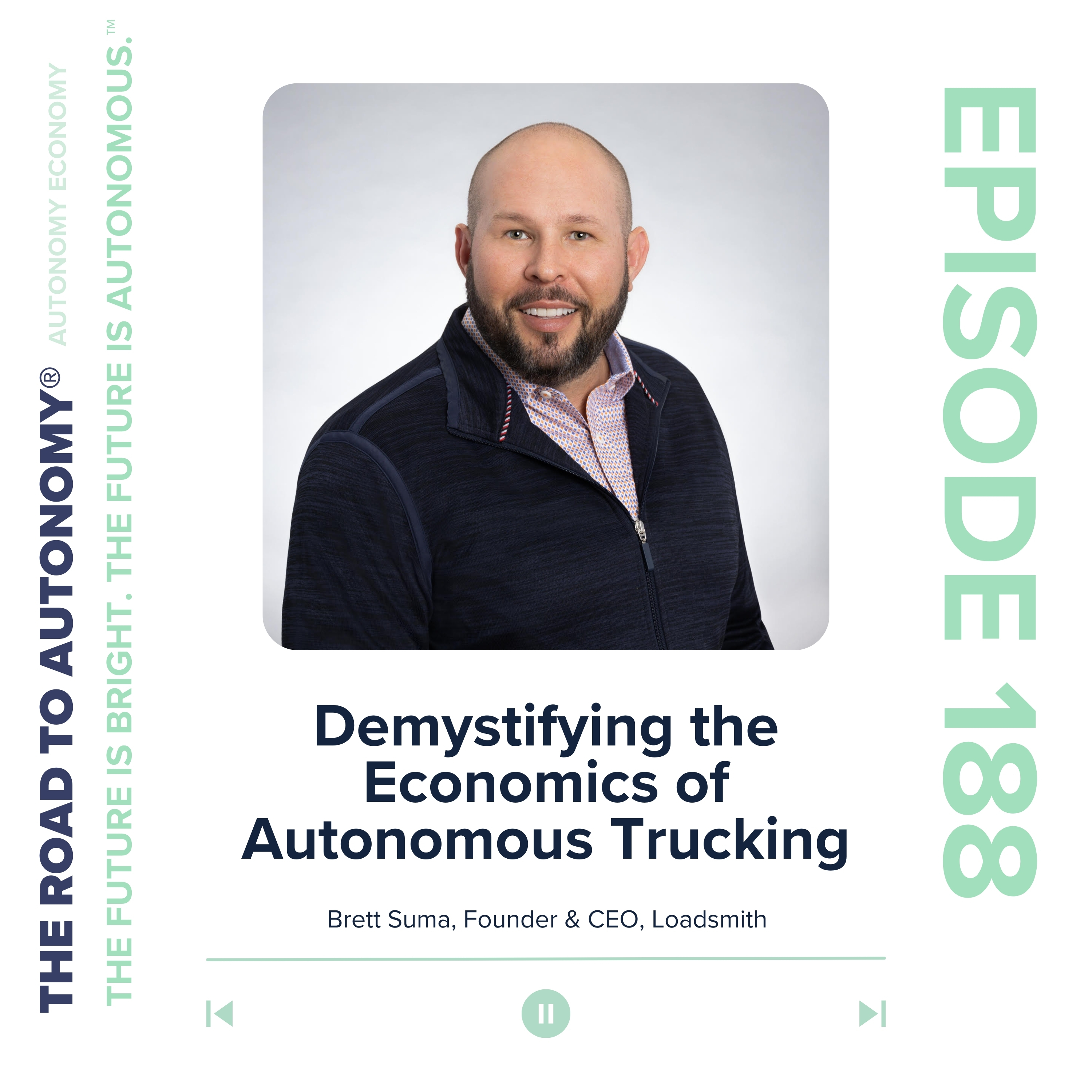
Episode 188 | Autonomy Economy: Demystifying the Economics of Autonomous Trucking
 2024-04-03
2024-04-03
Brett Suma, Founder & CEO, Loadsmith joined Grayson Brulte on The Autonomy Economy podcast to discuss the unit economics of autonomous trucking and the Loadsmith self-balancing freight network.
The conversation begins with Brett discussing the unit economics of traditional trucking.
Trucking and the most successful trucking companies look at unit economics. However they are measuring their business, they are going to do it in a very unit way. Whether you are looking at revenue per truck per day, revenue per truck per week, revenue per truck per hour, depending on your business and how your business is operating, revenue per mile obviously.
When you start looking at things like fuel surcharge per mile, your deadhead miles, your out of route miles, all of the things that build into those unit economics, that is the basis of trucking. So you have to look at things at a unit economic perspective. – Brett Suma, Founder & CEO, Loadsmith
When autonomous trucks are introduced into the fleet the economics are going to change.
Well, the whole thing is going to change. The entire economics of trucking are going to change and not in every lane on day one, and not even in every lane forever. But the economics of, let’s just call it your 20 most dense lanes in the United States are going to probably change very drastically, very quickly.
Then it will continue to expand to the top 100 lanes from a density perspective, and it may settle in somewhere 150 to 250 total lanes that can support autonomous from an economics perspective. – Brett Suma, Founder & CEO, Loadsmith
Autonomous trucks are first going to be deployed on over-the-road long haul routes, while the last-mile routes will still be driven by professional drivers. This dichotomy is going to lead to job creation and higher wages because of the demand for for first and last mile drivers. To capitalize on the hybrid network that is going to emerge from the mass deployment of autonomous trucks, Brett founded Loadsmith.
Along with the emergence of autonomous trucks, zero-emission trucks are also beginning to come online. However, the unit economics of zero emission trucks do not calculate today due to their higher upfront costs which is 50% more on average than traditional diesel trucks.
I’m very, very pro zero emission. I’m very, very pro autonomous. I do not think because of the cost of the truck that you’re going to be able to have zero emission in the middle mile at scale without it being autonomous. – Brett Suma, Founder & CEO, Loadsmith
This is partly because of the infrastructure and the economics to operate the service with a professional driver. Where zero emission trucks could thrive is in the first and last mile. While autonomous trucks will thrive in the middle-mile. To scale up their autonomous freight network, Loadsmith partnered with Kodiak.
Wrapping up the conversation, Brett shares his opinion on the future of the freight industry.
Episode Chapters
0:23 Economics of Trucking
3:24 Impact of Insurance Costs on Trucking Economics
15:36 Economics of Autonomous Trucks
24:56 Building a Hybrid Freight Network
31:55 Founding of the Loadsmith Freight Network
36:04 Unit Economics of Zero Emissions Trucks
39:41 Economic Advantages of the Loadsmith Freight Network
42:20 Freight Balancing
48:24 Partnership with Kodiak
51:24 Future of Freight Industry
Recorded on Thursday, February 29, 2024
--------
About The Road to Autonomy
The Road to Autonomy® is a leading source of data, insight and commentary on autonomous vehicles/trucks and the emerging autonomy economy™. The company has two businesses: The Road to Autonomy Indices, with Standard and Poor’s Dow Jones Indices as the custom calculation agent; Media, which includes The Road to Autonomy and Autonomy Economy podcasts as well as This Week in The Autonomy Economy newsletter.
See Privacy Policy at https://art19.com/privacy and California Privacy Notice at https://art19.com/privacy#do-not-sell-my-info.
More Episodes
Create your
podcast in
minutes
- Full-featured podcast site
- Unlimited storage and bandwidth
- Comprehensive podcast stats
- Distribute to Apple Podcasts, Spotify, and more
- Make money with your podcast
It is Free
- Privacy Policy
- Cookie Policy
- Terms of Use
- Consent Preferences
- Copyright © 2015-2024 Podbean.com






